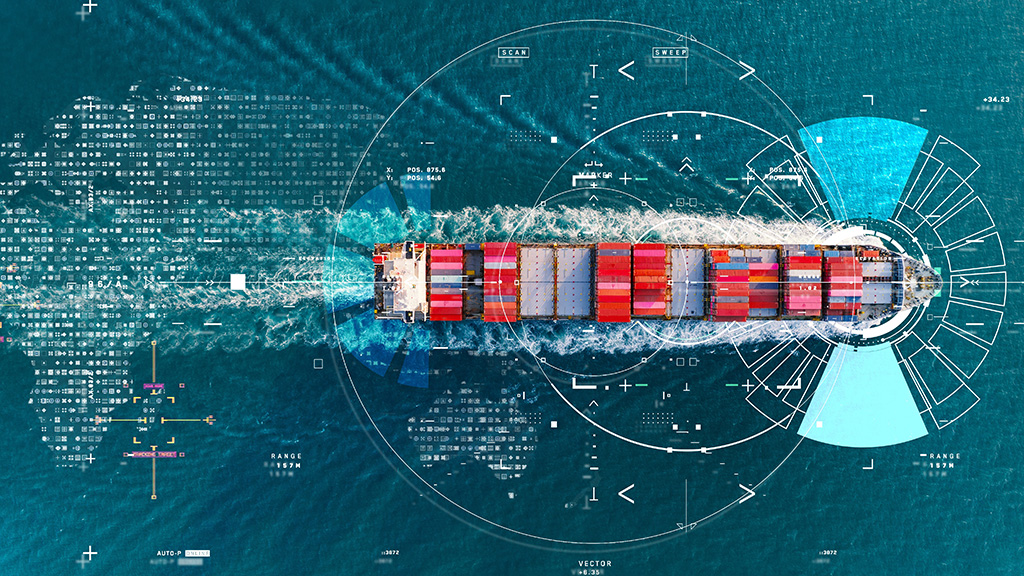World trade was severely impacted during the COVID-19 pandemic, with shipping costs rising and pushing global inflation higher. The Suez and Panama Canals were not exempt from the effects of the pandemic, being key parts of major global supply chains. After pandemic restrictions eased, supply chains were restored and international sea-freight shipping recovered.
On Feb. 19, 2024, the Baltic Dry Index, which measures the global shipping costs for moving major materials by sea, had increased 195 per cent year over year. This rise in commodity transportation costs resulted from the Chinese economy beginning to recover, plus replenishment of global commodities inventories. As a result of increased maritime trade, resolving the challenges faced by major trading routes like the Suez and Panama Canal has become crucial.
The Suez Canal
The Suez Canal is one of the most important trade routes worldwide. Beginning operation in 1869 as a maritime trade link, the 193 kilometre Suez Canal is the shortest direct connection between Europe and Asia. An alternative route would be passing by the southern tip of Africa, the Cape of Good Hope, amounting to additional weeks of travel time.
More than a tenth of worldwide trade moves through the Suez Canal; upwards of US$1 trillion worth of goods annually. Specifically, consumer goods, energy, and commodities are transported via the Canal to Europe from the Middle East and Asia. In 2021, the Suez Canal saw shipping of around eight per cent of world-wide liquified natural gas, and severn-to-10-per cent of total global oil.
According to New Zealand’s Ministry of Foreign Affairs and Trade, if the canal were blocked even for a day, it could cost US$6 to $10 billion and decrease global trade by 0.2 per cent to 0.4 per cent. In January of this year, the level of trade through the canal reached its lowest point in the last three years, going back to when it was last blocked by the Ever-Given supercargo ship.
Entering and exiting the canal remains unsafe. The shipping routes between India and the Horn of Africa are a “high-risk zone,” with India attempting to improve the safety of its coastline through nearly $4 billion of surveillance and defense equipment bought from the U.S.
According to CNBC, the frequency of Somali piracy attacks in the area has been on the rise since the end of 2023. This threat, as well as the ongoing Red Sea Houthi attacks, has resulted in the seven-day moving average of commercial transports dropping from a 2023 peak of 83 daily transits to 49. Consequently, the Cape of Good Hope is experiencing higher traffic as transport vessels attempt to avoid potential danger at sea.
In addition to being a bottleneck for many trade routes, the Red Sea also hosts a large amount of fibre-optic cable that carries 17 per cent of worldwide internet traffic. Damage to cable networks by Houthi rebels could lead to the disruption of internet services globally and impact a range of important transmissions, including the dissemination of financial data.
Piracy and regional geopolitical conflicts remain major factors disrupting Suez Canal operations. Decreasing traffic through the Suez Canal, with trade ships seeking out safer alternative routes, results in heightened transportation costs and longer delivery times, pushing up global inflation.
The Panama Canal
2.5 per cent of worldwide seaborne trade passes through the Panama Canal on average annually, with 14,000 commercial ships using the route last year. The canal is the link between the U.S. and North Asia and is the location of 14 per cent of America’s seaborne commercial transit. However, a severe drought has caused the Panama Canal Authority to reduce the number of ships allowed to travel through the canal to 24 per day, 12 less than the pre-drought average.
This restriction could result in 100 million tons of undelivered commodities, the same volume as 35 per cent of cargo shipped through the Panama Canal in 2022. McKinsey & Company estimates the restrictions will cause around half of liquified petroleum trade vessels to use alternative routes. Longer travel times will increase transport costs by over $1.0 billion annually.
Since October 2023, Panama Canal toll revenues have decreased by around US$100 million per month. Due to the drought restrictions, shipping companies are operating via the Panama Canal Railway as one alternate route, causing unprecedented delays.
The Panama and Suez Canals are of paramount importance to global trade due to their respective geographic locations, with even small disruptions causing major setbacks. These problems must be resolved to recover past trade volumes.
Geopolitical threats on the Suez, such as Somali piracy and Houthi attacks, are being contained through co-ordinated peacekeeping efforts by countries that are major beneficiaries of the canal.
In the case of the Panama Canal, the current environmental issues pose a major challenge that could be resolved through infrastructure upgrade projects. The successful resolution of these issues will have a large positive impact on businesses and consumers worldwide.
Dmytro Konovalov has over 10 years of experience in equity research and analysis for global markets at leading international financial institutions.








Recent Comments
comments for this post are closed